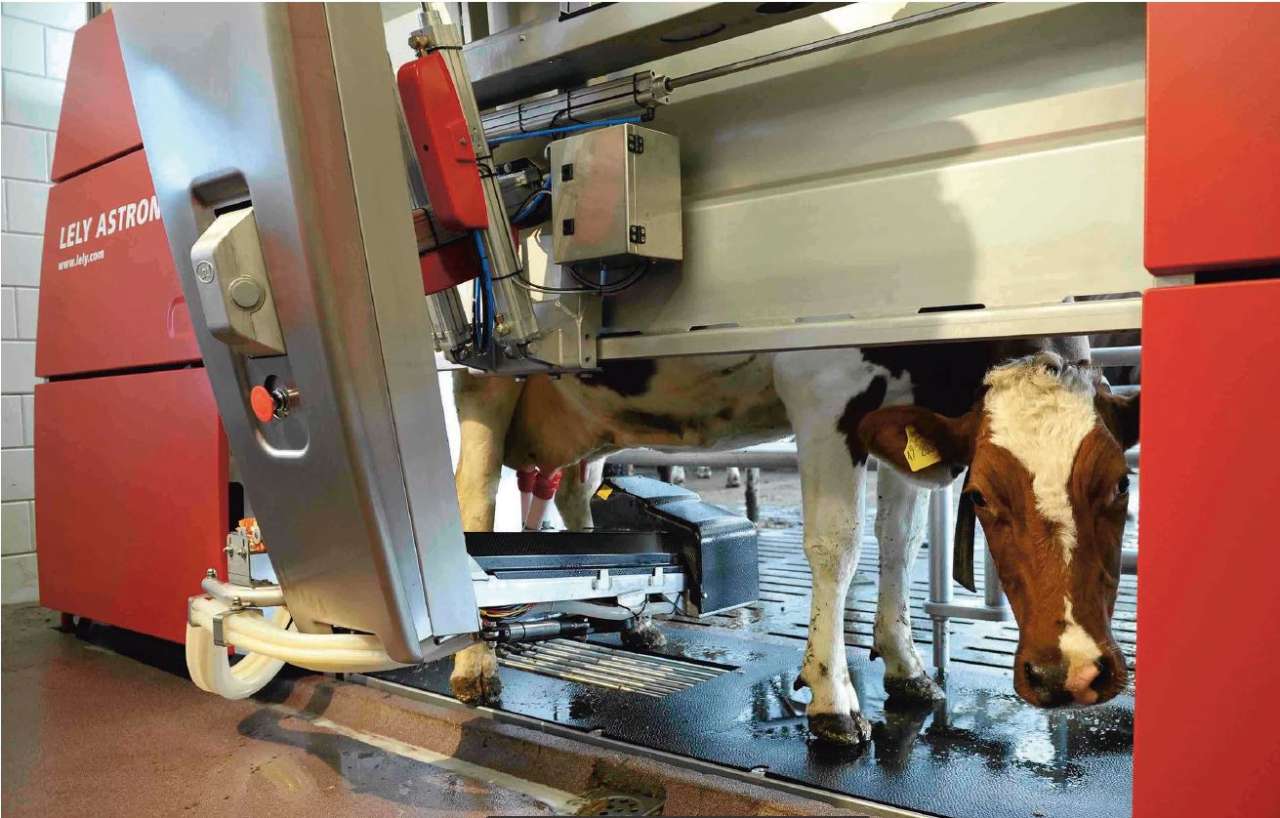The milking robot - important in modern agriculture

Photo: Lely.
When it’s a question of improving the efficiency of agriculture, increasing flexibility for the farmer and the well-being of the animals, a milking robot is the answer.
It's definitely become part of everyday operations on the dairy farm and represents new technology in agriculture. It is therefore interesting to compare farm operations with and without robots.
What are the consequences of changing to robot use?
More time and less money with robots
The number of milking robots in Norway is increasing by close to 200 per year. The study suggests that it is largely social factors that lie behind the choice to go over to robot-based dairying.
A milking robot gives higher production in a shorter time, as well as increased flexibility for the farmer. The economy of farms with robots is weaker than for those without, both for operating income before depreciation and measured as remuneration per year of work.
A farmer with a robot uses on average 10 hours less time annually per cow, but gets 700 kilograms more milk per animal, i.e. 8100 kilograms per cow-year. Farms without robots have better economies (figures from 2014).
"When we for the second year running see the same result, we can say with greater confidence that these are real differences", says Jostein Vasseljen, accounts statistician and economist at NIBIO Trondheim.
Great variety among those using robots
Within the group using robots, there are clear differences in the economic result without any given factor providing an obvious explanation.
"The sum of many small differences pointing in the same direction seems to give the final result", says Vasseljen. In the end it seems to be the quality of the leadership that makes the difference.
The difference is barely a half million Norwegian crowns more in remuneration per man-year for those running their farms best in the group using robots.
Contacts

Jostein Vasseljen
Senior Adviser
-
Division of Survey and Statistics
(+47) 941 35 739 jostein.vasseljen@nibio.no Office Location: Trondheim
Contacts

Jostein Vasseljen
Senior Adviser
-
Division of Survey and Statistics
(+47) 941 35 739 jostein.vasseljen@nibio.no Office Location: Trondheim
